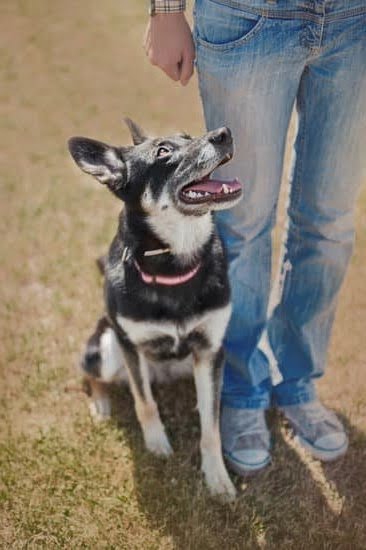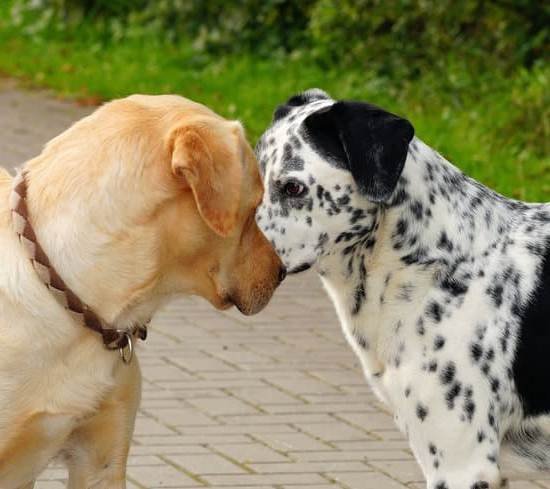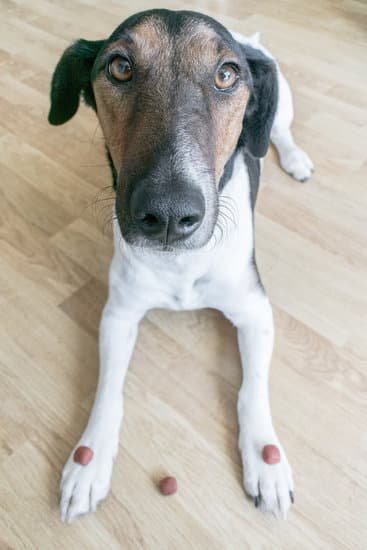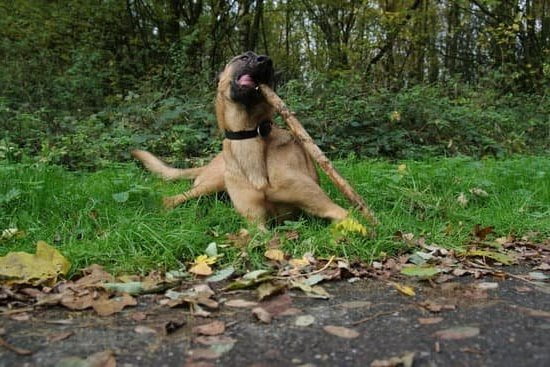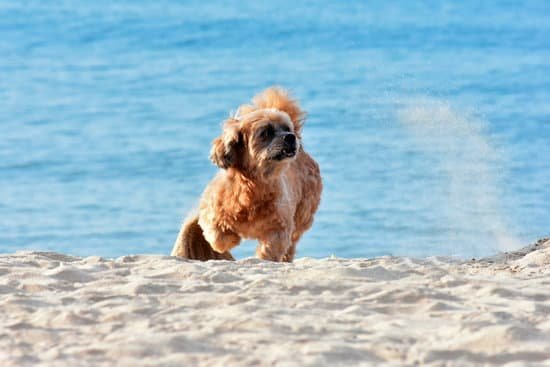Introduction
Food aggression in dogs is a behavioral issue that can be dangerous and can escalate quickly if not addressed. Dogs with food aggression display fear-based behaviors to certain stimuli in their environment such as the presence of people or other animals near a food source. It can manifest in many ways such as growling, snarling, snapping, lunging, barking or even biting when they feel threatened by something in their environment while they are eating. This is an issue which should be taken seriously as it could potentially lead to serious consequences if a dog were to bite or otherwise inflict harm on another living creature or person who approached them while they were eating.
In order to address this behavior, it is important for pet owners and animal professionals to identify potential triggers for the food aggression and use appropriate techniques and strategies to help reduce and manage it. Depending on the severity of the aggressive behavior there are a variety of methods that can be implemented that range from behavioral modification through positive reinforcement training, clicker training and/or working with specialist resources such as veterinary behaviorists.
Signs of Food Aggression in Dogs
Physical Cues: Signs of food aggression in dogs can include baring teeth, growling, snarling, snapping, or even lunging at another animal.
Environmental Cues: Signs of food aggression can also be seen in the environment. For example, if a dog guards his bowl from other animals or people by barking or placing himself between them and their food source, it may be an indication that he is exhibiting aggressive behavior towards their presence near the bowl.
Emotional Cues: In addition to physical and environmental cues, there may also be emotional signs of food aggression. The dog may seem tense or on edge when others come near the food bowl. He may also become possessive and attempt to keep them away by growling or showing teeth.
Common Misunderstandings of Food Aggression in Dogs
Many people misunderstand food aggression in dogs, assuming that the only way it presents is with a full on attack when someone tries to take away their food. This is not always the case as food aggression tends to manifest differently in each dog. Some may exhibit more defensive behaviors and others will simply give a warning growl letting you know not to touch their food. In extreme cases, a full on attack can occur.
Aside from classic “food guarding”, there are a few other types of aggression surrounding food that need to be addressed. Some dogs become possessive of their bowls and the area in which they eat leading to an overprotective behavior such as aggressive barking or snapping at anyone or anything that comes near while they eat. Other times dogs can show resource-specific aggression in which they guard certain types of items such as bones, toys, or any type of treat you give them as if it’s their life-force. To properly address these behavioral issues, proper training needs to be done.
If your dog is exhibiting any signs of food aggression, it is important for start training with the help of a professional animal trainer or behaviorist who has experience with helping owners handle this issue safely and effectively . Training can be tailored to the individual needs of your pup depending on what type of aggression he may showing and how severe it is.
Causes of Food Aggression in Dogs
Biological: Food aggression in dogs is an instinctive behavior associated with survival, as canines are carnivorous animals and will instinctively fight for resources when necessary. This is especially true during times of near food scarcity, where the competition for food sources increases.
Environment: The environment in which the dog lives has been identified as playing a big role in the development of aggressive behavior when it comes to food. Dogs that are kept in outdoor cages or kennels with limited access to human interaction may develop aggression more easily due to their need to protect their resources and space. Additionally, if there are multiple dogs within one household, competition over resources may quickly develop into aggressive behavior amongst them.
Social: Dogs that have experienced negative experiences while they were eating may act accordingly when offered new food and be extremely defensive and protective of what they consider ‘their’ resource. Owners who have a long history of disciplining their canine family member upon receiving food or treats can develop fear instead of enjoyment from consuming these items and in turn become aggressive when approaching them or when other people or animals try to do so as well.
Cognitive: If a dog’s cognitive development was stunted or impaired due to illness, injury or past environment factors, it may be impossible for them to understand certain social cues such as sharing and yielding recipes for resources like food. This can lead dogs to aggressively protect their meals from other animals and people however this reaction can be rectified with proper disciplined reinforcement of desired behaviors around mealtime situations.
Prevention of Food Aggression in Dogs
Preventing food aggression in dogs requires a thoughtful and comprehensive approach. Socialization is key to establishing good behavior with food, as well as avoiding aggression when around it. Socializing a dog with other animals or people includes exposing them to unfamiliar sights, smells, experiences, and maybe even other furry friends. When socializing, use positive reinforcement training such as treats for favorable behaviors and ignore inappropriate displays of aggression. Proper nutrition also plays an important role in preventing food aggression from developing. Feeding a canine species-appropriate diet that is tailored to the individual dog’s needs can help prevent nutritive deficiencies which may lead to aggressive behaviors related to feeding or competition over resources. Additionally, offering appropriate outlets for energy can help avoid conflicts during feeding times; physical exercise, mental stimulation/playtime activities and interactive toys can provide additional opportunities for satisfaction beyond mealtime. By creating an appropriate environment with a focus on prevention rather than cure, agitation over food sources might be avoided altogether.
Training for Food Aggression in Dogs
Counter-conditioning involves changing the dog’s negative association with food and replacing it with a positive one. This is accomplished by associating the food item with high-value rewards such as treats, toys or affection. Every time the dog gets close to the food item or receives it, they should be immediately given a reward that they find desirable. Over time, this process helps to teach dogs that food can lead to happy experiences instead of fear and aggression.
Systematic desensitization is the process of gradually introducing an object or situation that may cause a reaction in your dog into their environment until they no longer respond in an aggressive manner when presented with it. To do this successfully, start by rewarding your pet each time they come near the object without reacting and slowly build up their tolerance by increasing its presence over time.
Time-outs can be used as part of both counter-conditioning and systematic desensitization techniques when training for food aggression in dogs. During this process, if your dog begins showing signs of aggression, calmly remove them from the situation and wait for them to calm down before continuing again. This will help reinforce that behavior won’t be rewarded with food in order for your pet to move on from displaying aggressive tendencies toward their meals.
How to Handle Food Aggression Incidents
1. Remove the food dish: Immediately remove the food dish from the dog’s reach as soon as you notice any aggressive behavior. This action shows the dog that this kind of behavior is unacceptable and gives you a chance to redirect the aggression towards something else.
2. Provide an alternate activity: Offer an alternative activity for your dog such as a chew toy or fetch game. The goal here is to redirect the energy away from the food and keep them distracted from their aggressive behavior.
3. Use verbal prompts: While your dog is distracted, provide them with verbal commands such as “leave it,” or “sit,” to help them focus on you instead of the food.
4. Introduce impulse control techniques: Begin working with your pet on impulse control techniques such as wait commands and distraction techniques. These will help teach your pet how to properly respond when they become aroused around food and resources in general, rather than become aggressive.
5.Ensure safety while training: Be sure that everyone in your household is prepared before introducing these obedience exercises so you won’t be caught off guard during confronting situations and can promote consistency when addressing aggression in dogs with food-oriented behaviors.
Conclusion
Food aggression in dogs is an important issue to address for the safety of owners, pets and other animals. Dogs that display food aggression must be handled in a safe and effective manner to minimize any potential risks. The most important factor in successfully managing food aggression in dogs is accurate diagnosis, as each dog’s individual needs must be fully understood before proceeding with treatment. Professional guidance should be sought to ensure the best outcomes. It is essential to practice preventative measures whenever possible, including proper socialization, avoidance of confrontational behavior and sufficient amounts of exercise or playtime before or after meals. With patience, dedication and guidance from a professional, pet owners can help their dogs address the underlying behavioral issues causing aggressive behaviors around food. Doing so will help create a loving relationship between pet parents and their pups for many years to come.

Welcome to the blog! I am a professional dog trainer and have been working with dogs for many years. In this blog, I will be discussing various topics related to dog training, including tips, tricks, and advice. I hope you find this information helpful and informative. Thanks for reading!

